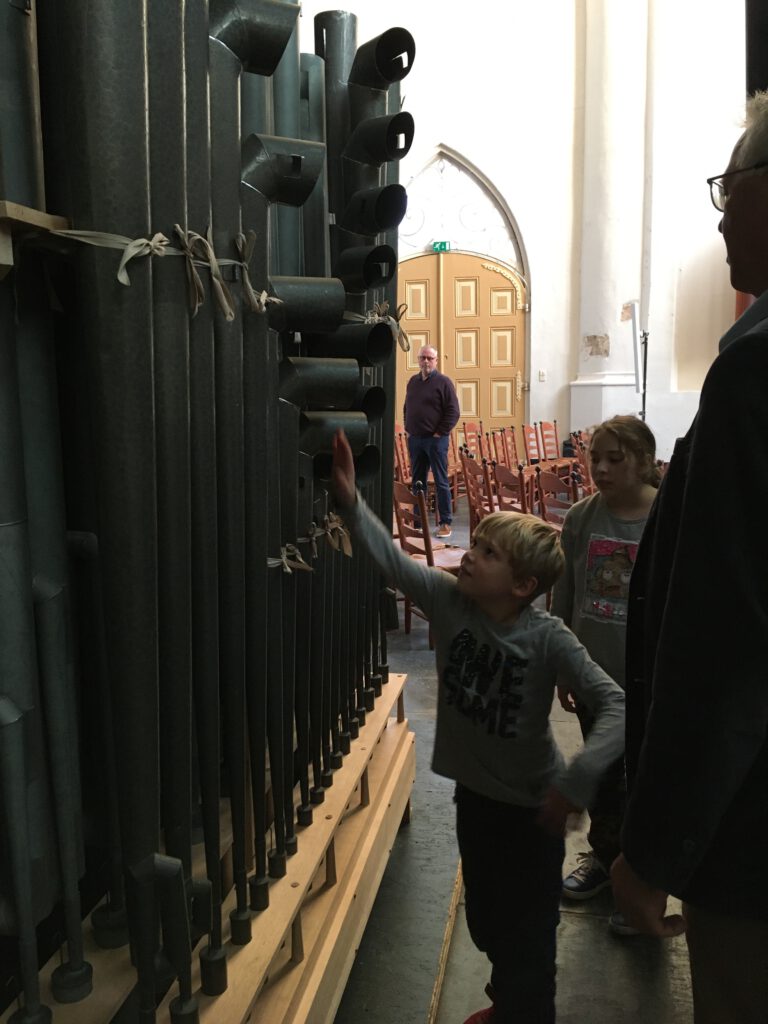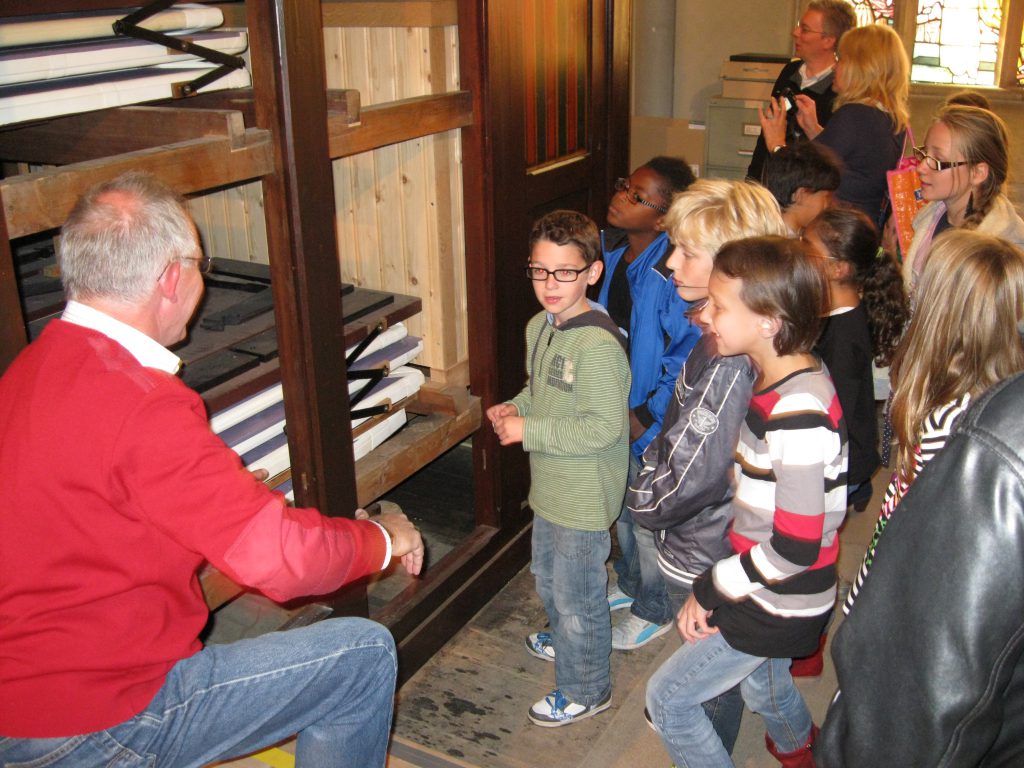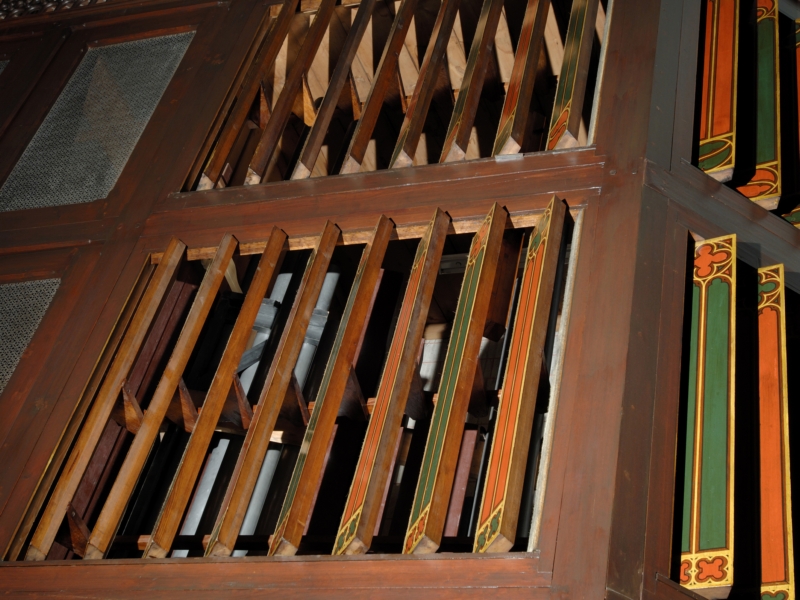During a visit to a large organ in the church or the concert hall, there is much to discover for children. As an organist you can make the visit even more interesting by doing exciting experiments together with the children. This prevents you from just giving a demonstration of your organ. A way to actively involve children is letting them predict what will happen or what they expect. And then try it out together. Below are some examples.
During the construction of the Do-organ, children have already learned what the function of the bellows is. Is it possible to take the children in the church or concert hall to the bellows room? When they can see the wind supply of a large organ, there is something new to discover. After all, these bellows are not filled by hand, but with a motor. When the engine is switched off, the bellows deflates. But until it is completely empty, a tone can continue to sound.
The tremulant is an aid to make the sound wave extra vibrate. This gives a melody a different effect.
If the organ in the church has a swell box, let the children think about the loudness of the sound of the organ. And about its use. Start with the music and then investigate together how the effect arises.


